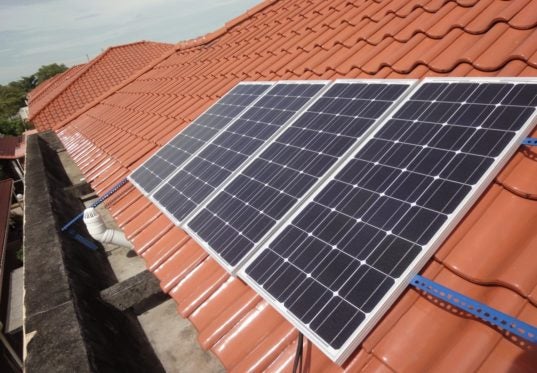5 Innovations in Green Building Technology in 2018

With new and innovative technologies constantly moving the construction industry forward, it can be difficult to keep up with the best way to build your house.
Many self-builders are looking at the building as ecologically friendly, or as ‘green’, as possible. Which means that these innovations are important to us. With that in mind, let’s look at 5 innovations in green building technology in 2018 that can be used in building our new homes.
1. SIPs
Structural Insulated Panels were developed in America in the 1930’s, and are a high-performance system used in construction. The panels are used in residential homes, commercial buildings, modular pod hotels, and particularly in the construction of leisure homes.
Construction generally consists of two structural facings that sandwich insulation between them. The advantage of prefabrication is that they can be constructed in a controlled environment and designed to work for any design of a building.

They are, in fact, referred to by SIPA (Structural Insulated Panel Association) as the 21st-century building material.
How can we be sure that what we are using is green? Many SIPs panels are made using OSB boards, so we need to look for companies that source wood materials from a certified forestry program.
The panel delivers continuous insulation around the building, and the greater the panel thickness, the more energy efficient your home is.
When you consider that 50% of our energy use in the home comes from heating and cooling, that’s what it’s all about. Construction labour costs can also be reduced by 55% when compared to traditional “stick-building” methods. So it’s good for our pocket and great for the environment.
2. ICF
Insulated Concrete Formwork was first seen in the 1960’s and has grown in use ever since so that today there are several systems to choose from.
The simplest form of ICF consists of foam insulated blocks that are locked together. Concrete is then poured into the structure to form a solid wall up to 3 metres in height.
Is ICF a ‘green’ way to build. Some contend that the large carbon footprint left by the use of such materials as concrete and expanded polystyrene foam has too much of an environmental impact.

Others are saying that the tradeoff in potential energy savings due to the benefits of a large thermal mass, along with effective insulation, over a long period is worth it. Not to be ignored, is that such structures are considered to be able to last for centuries.
3. Solar panels
We can’t talk about green technology without taking another look at solar panels. They have been around for quite a while, so where are they at?
First, let's remind ourselves of the two types of solar panels currently available. There are PV, or photovoltaics, which capture the sunlight in order to harness electric power, and CSP, or concentrated solar power panels, which collect the heat of the sun to generate thermal energy. This then powers heaters or turbines.
Perhaps the latest innovation to watch out for is ‘solar skin’ panels. Advances are being made to make the panels more aesthetically pleasing by designing them to closely resemble the interfering with their efficiency. Panel efficiency currently stands at 26.6 percent, and there are great strides being made in energy storage by means of solar batteries.

No doubt, solar panels will continue to advance, and be more cost efficient to purchase and use as time goes on. Oh, and we need to keep an eye on solar windows.
4. Intelligent lighting
Lighting that turns on and off as you enter a room is by no means new. But advances in technology and intelligent lighting are taking those ideas to a whole new level. You also used to have to choose what type of light you want to install, but imagine one set of lighting that can be set to warm or cool white at the touch of a button.
Lighting is going several steps ahead by utilising such technologies as Li-Fi (Wi-Fi using light). It uses indoor positioning by tracking people’s location. There has also been much discussion on the health benefits of LED lighting. Now a great deal of attention is being given to installing lighting that has a greater impact on how we feel.
Perhaps one important thing to affect how we feel is to choose lighting that is made from recycled materials.
5. Recycled plastics
There’s no doubt that plastic is on everyone’s mind right now. Our oceans, in particular, are being severely affected by their misuse. So it’s good to see that new applications for their use in construction are being discovered every day.
Polymeric timber, for instance, is made from recycled plastic and wood fibres. The claim is that these are more environmentally friendly and also require less maintenance. Although they have been used for some time for products such as wood decking, they are also being used as exterior cladding and fencing. It’s even possible to have carpets made from old plastic bottles that are spun into fibre.
Without a doubt, all areas of green building technology will continue to advance as more and more manufacturers of building products see the benefits, both economically and ecologically
Josh Andrews is a home improvement hobbyist. When he isn't tinkering with something, he enjoys writing about home improvements, construction and gardening.








